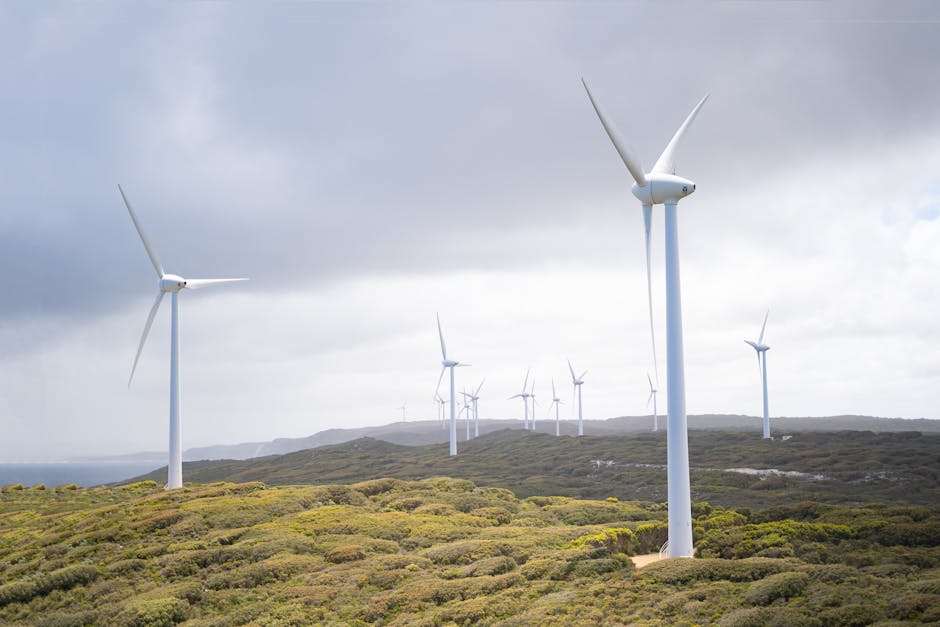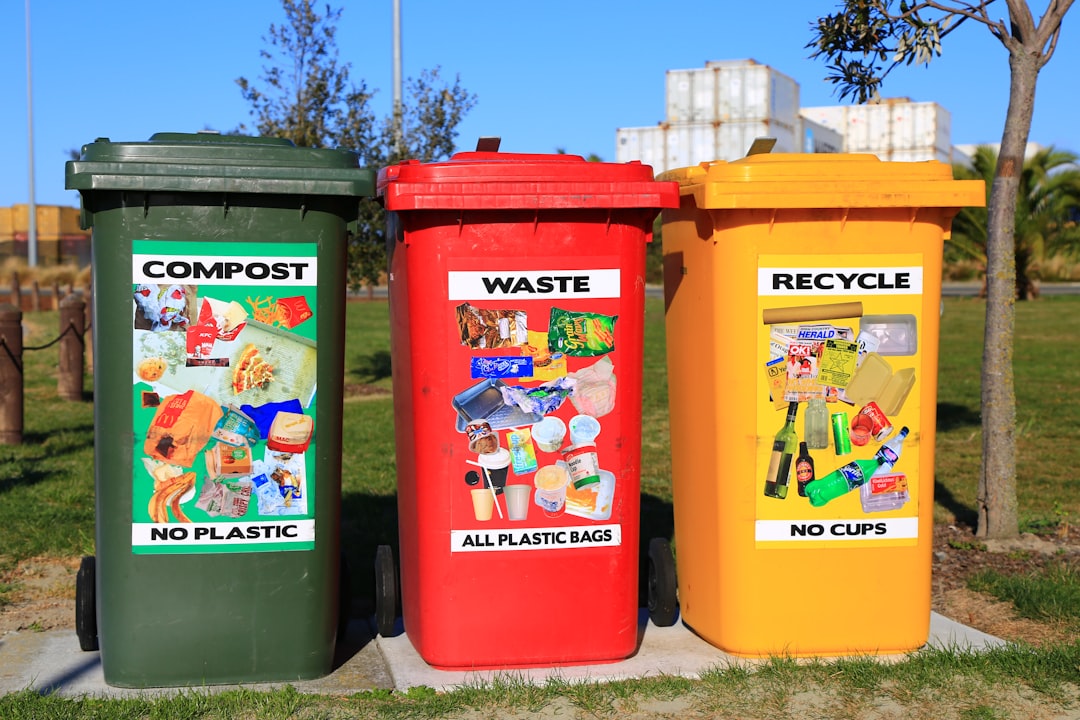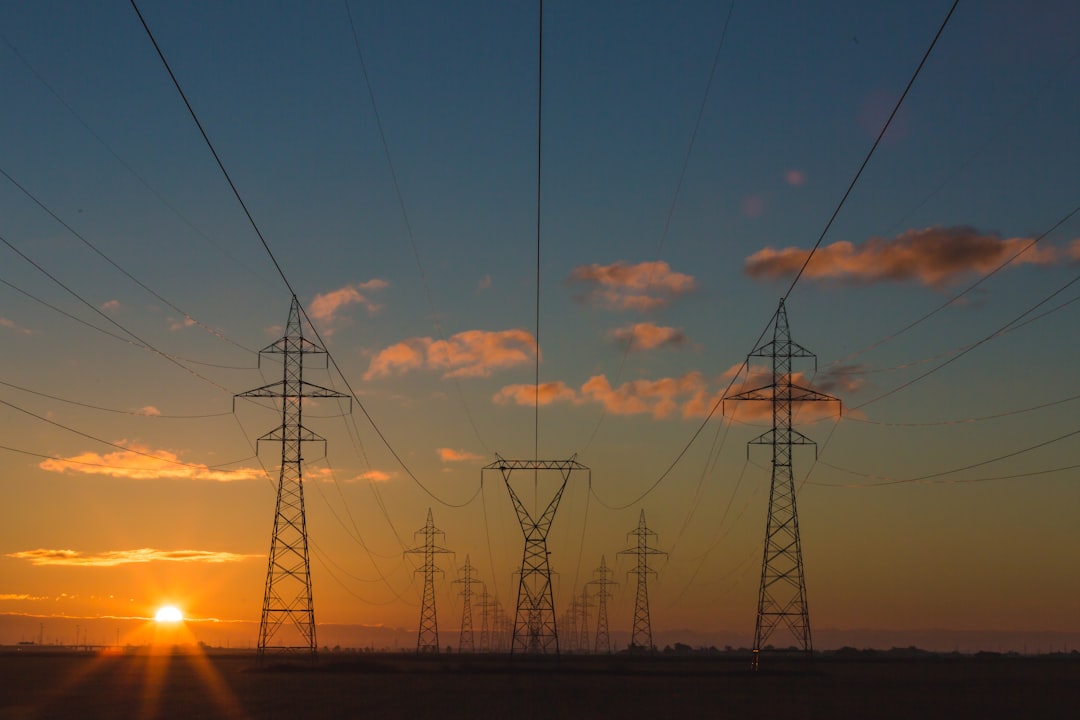Harnessing the Power of the Sun: Solar Energy Innovations
Solar energy has been a beacon of hope in the quest for sustainable power. Recent innovations have made it more efficient and accessible than ever before.
For instance, the development of bifacial solar panels allows for the absorption of sunlight from both sides, effectively doubling the energy capture. Another exciting advancement is the use of perovskite solar cells.
These are not only cheaper to produce but also boast a higher efficiency rate than traditional silicon-based cells. Rooftop solar systems have become increasingly popular among homeowners, and with the advent of solar tiles, they are seamlessly integrated into the design of modern homes.
Moreover, community solar projects are blossoming, allowing people without direct access to sunlight to invest and benefit from this clean energy source. These developments signal a bright future for solar energy, potentially making it a staple in our global energy mix.
Wind Energy: Capturing Breezes for a Better Tomorrow

Wind energy has been riding a wave of innovation, with new technologies enhancing its efficiency and output. Offshore wind farms are gaining traction, as they harness stronger and more consistent winds found over the ocean.
Floating wind turbines are a groundbreaking development, allowing for installations in deeper waters where the wind is even more potent. On land, vertical-axis wind turbines are being designed to operate efficiently in urban settings, where space is limited.
These turbines can capture wind from any direction, making them highly versatile. Advances in materials science have led to the creation of lighter and more durable turbine blades, reducing maintenance costs and increasing lifespan.
Furthermore, energy storage solutions are being developed to ensure a steady supply of power even when the wind isn’t blowing. Wind energy is swiftly becoming a cornerstone of renewable energy strategies worldwide.
Hydropower's New Wave: Innovative Technologies in Water Energy

Hydropower has long been a reliable source of renewable energy, but new technological strides are making it even more promising. Small-scale hydroelectric systems are now being designed to generate power from minor water flows, such as those in irrigation canals or small rivers.
This makes hydropower accessible to communities without large water bodies. Additionally, tidal and wave energy are emerging as viable options, harnessing the natural ebb and flow of ocean waters to generate electricity.
Advances in turbine technology have improved efficiency, allowing more energy to be captured from the same volume of water. Fish-friendly turbines are also being developed to minimize the environmental impact on aquatic life.
Moreover, pumped storage hydropower is being optimized to store excess energy generated from other renewable sources, ensuring a consistent energy supply. These advancements are helping to transform hydropower into a dynamic component of the renewable energy landscape.
Bioenergy: Turning Waste into Wealth

Bioenergy is carving out a significant role in the renewable energy sector by converting organic waste into usable power. One of the most exciting developments is the use of advanced biofuels, which are derived from non-food crops and agricultural residues.
These fuels are helping to reduce our reliance on fossil fuels while cutting down on greenhouse gas emissions. Anaerobic digestion technology is another breakthrough, allowing for the conversion of organic waste into biogas, which can be used for heating or electricity generation.
Algae-based biofuels are also gaining attention, as they grow rapidly and have a high energy yield. Furthermore, biomass gasification is being refined to produce cleaner and more efficient energy.
These innovations in bioenergy not only provide sustainable energy solutions but also offer a way to manage waste effectively.
Geothermal Energy: Tapping into Earth's Hidden Heat

Geothermal energy is emerging as a formidable player in the renewable energy arena, with advancements making it more viable and efficient. Enhanced geothermal systems (EGS) are a novel technology that allows for the extraction of heat from dry rock formations, greatly expanding the geographical scope of geothermal energy.
Direct-use applications are being developed to utilize geothermal heat for residential and commercial heating, reducing the demand for fossil fuels. Additionally, binary cycle power plants are being built to operate at lower temperatures, increasing the potential sites for geothermal power generation.
Innovations in drilling technology have reduced costs and increased the depth at which geothermal energy can be harnessed. Geothermal heat pumps are also gaining popularity for their ability to provide both heating and cooling solutions for homes.
These advances are set to unlock the vast potential of geothermal energy, providing a stable and reliable source of power.
Hydrogen Fuel: The Future of Clean Energy

Hydrogen fuel is rapidly gaining attention as a versatile and clean energy source. It can be produced from a variety of resources, including natural gas, biomass, and water electrolysis, making it a flexible option for different regions.
The development of fuel cell technology has enabled the efficient conversion of hydrogen into electricity, with water being the only byproduct. This makes it an attractive solution for reducing carbon emissions.
Hydrogen-powered vehicles are becoming more common, with major car manufacturers investing in this technology. Additionally, hydrogen can be used to store and transport energy, providing a solution to the intermittency issues faced by other renewable sources.
Initiatives are underway to create a hydrogen economy, where hydrogen serves as a primary energy carrier. These advancements position hydrogen fuel as a key player in the transition to a sustainable energy future.
Storage Solutions: Ensuring a Steady Supply of Renewable Energy

As the reliance on renewable energy sources grows, the need for efficient energy storage solutions becomes paramount. Battery technology is at the forefront of this revolution, with lithium-ion batteries leading the charge.
They are now more affordable and have longer lifespans, making them ideal for both residential and commercial use. Solid-state batteries are an emerging technology that promises even greater energy density and safety.
Beyond batteries, pumped hydro storage and compressed air energy storage are being developed to provide large-scale solutions. Flywheel energy storage systems are gaining popularity for their ability to deliver rapid bursts of energy.
Additionally, advancements in thermal energy storage enable the capture and release of heat for later use. These storage solutions are critical for ensuring a consistent and reliable supply of renewable energy, even when the sun isn't shining or the wind isn't blowing.
Smart Grids: Revolutionizing Energy Distribution

The integration of renewable energy sources into the existing power grid requires innovative solutions, and smart grids are leading the way. These grids use digital technology to monitor and manage the distribution of electricity efficiently.
They allow for better integration of renewable sources by accommodating fluctuations in energy supply. Smart meters are being deployed to provide real-time data on energy consumption, empowering consumers to make informed decisions about their usage.
Demand response programs are being implemented to encourage consumers to reduce their energy use during peak times, easing the strain on the grid. Furthermore, microgrids are being developed to operate independently or in conjunction with the main grid, providing resilience against power outages.
These advancements are transforming the way electricity is distributed, paving the way for a more sustainable and efficient energy future.
What do you think about this topic? Share your thoughts in the comments below — we'd love to hear from you! Want more stories like this? Follow us and never miss out!

